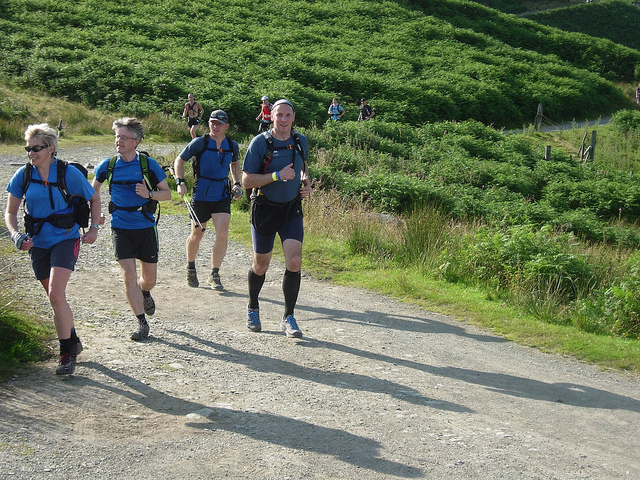The conversation I’ve had most since coming back from Coniston goes something like:
“How did your race go?”
“Okay – but I retired after 75 miles.”
“Oh dear, what happened?”
Sometimes, I just tell them about twisting my knee and injury forcing retirement, giving them an explicit reason that’s mostly true (the knee was still weight bearing and wasn’t swollen so didn’t force retirement). Most importantly, it doesn’t lead to more questions. Other times, I just mumble something indistinct before distracting my interrogator with an offer to make a cup of tea (which is normally effective but was greeted with funny looks when I was in the middle of Waterstones.)
My experience of previous DNFs have always been fairly straightforward; for example, the first time I attempted the OMM (Original Mountain Marathon) my team mate and I made a simple navigation error and got extremely lost in some thick fog. We found ourselves 5km away from where we were meant to be and couldn’t make up the deficit, leading us to be timed out. (We were in good company that weekend as famous adventurer Sir Ranulph Fiennes was in the Elite competition and was disqualified after missing a checkpoint entirely.) The Lakeland 100 was a different matter; I was tired but not exhausted, in pain but not disabled and had a little under 16 hours left to cover 30 miles.
So what was the reason behind my decision to pull out?
After two weeks reflection and analysis, I know there wasn’t a single contributing reason that caused me to end my race early but a combination of factors overwhelmed me. It was, as the saying goes, Death By A Thousand Cuts.
Lists! We love lists, don’t we? Here’s one I brainstormed earlier about all the little niggles that curtailed my adventure:
- Lack of training.
- Not going on course recces.
- Not accepting that I’d be awake for 48 hours straight
- The heat!
- Killing my quads on descent to Checkpoint 1.
- Having to trek rather than run most of the first third of the course.
- Black Sail Pass; Scarth Gap; Sail Pass and, ultimately, Wether Hill.
- Having a massage at Dalemain.
- Not eating or drinking enough at Dalemain.
- Using trekking poles despite not having trained with them.
- Aggravating an existing, ITB related, knee problem.
- Finding out my race position and becoming concerned about people passing me.
- Envy at the speed I was being passed at by the 50 mile competitors.
- Having plans to meet friends on the Sunday after the race.
Anyone who has either attempted or completed an ultramarathon will tell you that a large part of the race is psychological. Dean Karnazes is often quoted as saying something along the lines of “In a 100 mile race, you run the first fifty miles with legs, the next 45 with your head and the last five with your heart.” Or, as Mick Wren so eloquently and succinctly put it on the Lakeland 100 Facebook group, “One doubt and you’re out.” Looking over this list, I can’t see any one single factor that is the dominant reason for retiring. A combination of all of them meant that, by the time I’d reached Checkpoint 10 – in fact, no – as I stepped out of the checkpoint at Howtown and started up Wether Hill, I’d already moved my finishing line from Coniston to Mardale Head. 75 miles and the three sections with the major ascents covered was a good days work. All I needed to do at CP10 was take the first step out of the gate. All I did was simply turn my back on the race and say “No more.”
So what have I learnt?


Excellent stuff there (and yes, I did listen to Shatner )
)